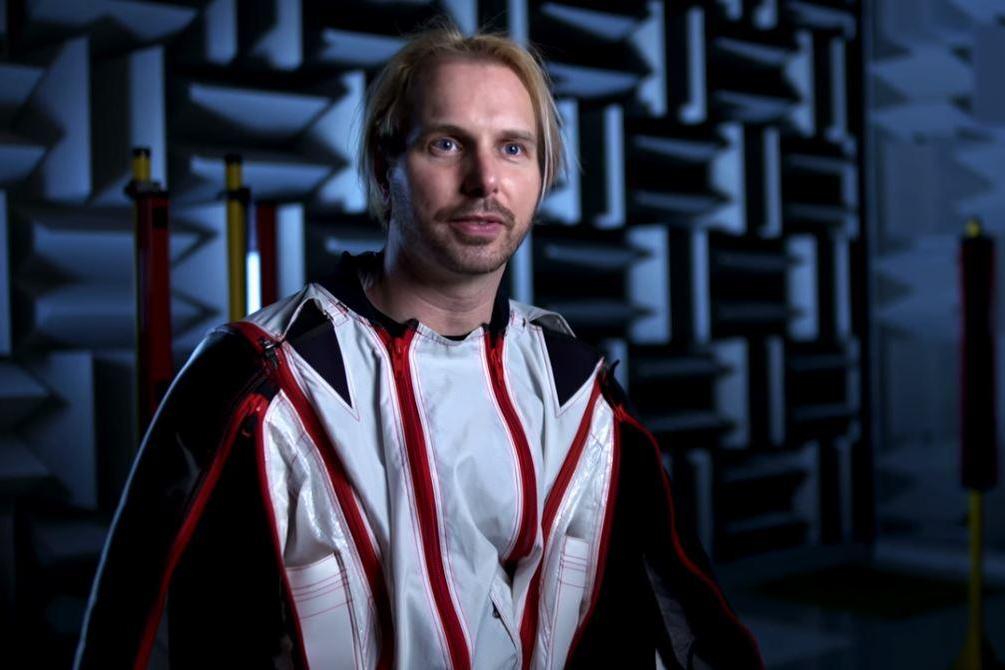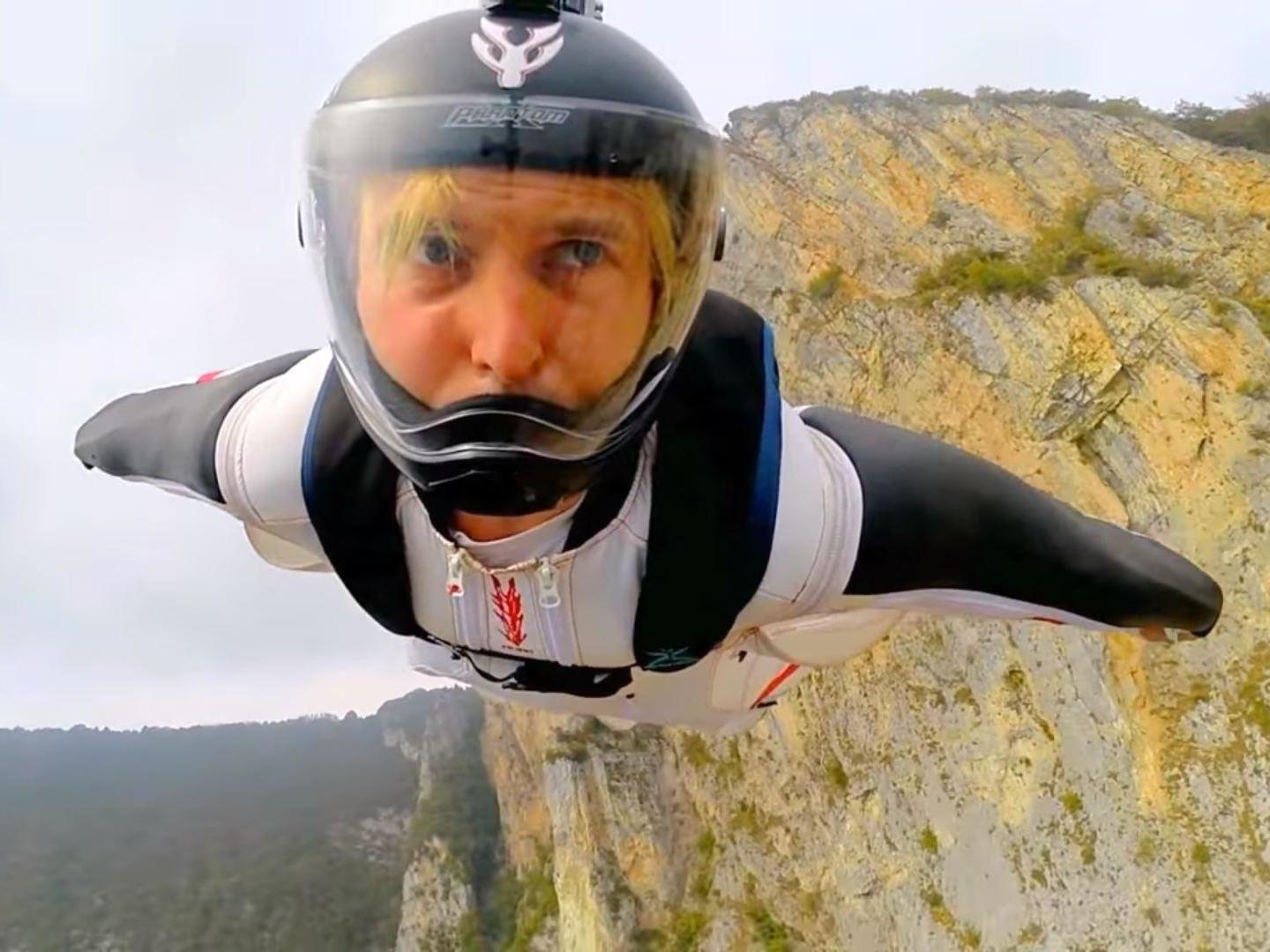Angelo Grubisic: Space scientist and champion wingsuit flier known for his daredevil antics
A lecturer and consultant, he made a key contribution to a number of Nasa and European space missions

Your support helps us to tell the story
From reproductive rights to climate change to Big Tech, The Independent is on the ground when the story is developing. Whether it's investigating the financials of Elon Musk's pro-Trump PAC or producing our latest documentary, 'The A Word', which shines a light on the American women fighting for reproductive rights, we know how important it is to parse out the facts from the messaging.
At such a critical moment in US history, we need reporters on the ground. Your donation allows us to keep sending journalists to speak to both sides of the story.
The Independent is trusted by Americans across the entire political spectrum. And unlike many other quality news outlets, we choose not to lock Americans out of our reporting and analysis with paywalls. We believe quality journalism should be available to everyone, paid for by those who can afford it.
Your support makes all the difference.As an extreme sportsman, Angelo Grubisic’s goal was to break the world records for flying as far, as fast, for as long and from as high an altitude as possible – not in a plane but in a wingsuit, an aerodynamic overall with fabric wings at the arms. He leapt from mountains or aircraft to glide toward the ground before deploying his parachute.
While training for those world records, he leapt from a helicopter over the Asir mountains of southwestern Saudi Arabia on 21 August and, according to three fellow fliers, performed a 360-degree barrel roll. Known as a “proximity flier” – one who stays close to the landscape – he hit a ridge at 108mph and was killed. He was 38.
Grubisic called his world-record preparations the Icarus Project after the Greek mythological figure who carried himself aloft on homemade wings of feathers and wax but died after flying too close to the sun.
He was a lecturer in aeronautics and advanced propulsion at the University of Southampton and had enlisted 10 students to help design the ideal wingsuit.
The current world record for wingsuit flight duration was set by Colombian skydiver Jhonathan Florez in 2012 with a time of nine minutes and six seconds. (Florez was killed during a wingsuit flight when he crashed into a mountainside in Switzerland in 2015.) The highest-altitude wingsuit jump – from a plane at 37,426 feet – was achieved in 2015 by retired US air force pararescueman Jimmy Petrolia over Davis, California.
The highest speed so far was reached by Japanese wingsuit pilot Shinichi Ito in 2011, when he hit 226mph. And the “greatest absolute distance” record of 19.94 miles was set by American Kyle Lobpries, also over Davis, in 2016.
The goal of Grubisic’s Icarus Project was to jump from 45,000 feet and fly as far as possible for around 15 minutes, reaching 280mph.
Wingsuit-flying and base jumping – the acronym refers to free-falling from bridges, antennae, spans or Earth features – were Grubisic’s hobbies, but he was far more than a hobbyist. He was described as “Rocket Man” or “Jet Man” for his stunts in which he took off and flew James Bond-style in a suit powered by jet engines on his arms and back.
He and the jet suit’s inventor, Richard “Iron Man” Browning, stunned tourists last year at the Bournemouth Air Festival in Dorset when they took off from a pier and buzzed over sea bathers at low level before one of Grubisic’s arm engines exploded. He cartwheeled and crashed in shallow surf.

Unlike some extreme athletes, Grubisic was after more than an adrenaline rush. At the University of Southampton, he specialised in the development and testing of advanced propulsion systems for spacecraft in support of the European Space Agency (ESA) and Nasa. He was a consulting engineer for the ESA during its BepiColombo mission to Mercury last year, a joint project with the Japan Aerospace Exploration Agency using two satellites that are due to reach Mercury’s orbit in 2025.
Grubisic was also a consultant to Nasa’s Jet Propulsion Laboratory in La Canada Flintridge, California, which is involved in exploration research on Mars, including probing the possibility of life on the red planet.
Angelo Niko Grubisic was born in Walsall in 1981, and grew up in nearby Willenhall. His father, a Serb immigrant, worked in a ball-bearing factory and married an English barmaid. Angelo was three when his parents divorced, and he and his half-sister were brought up by their mother.
He was deeply influenced by his maternal grandfather, Tom Richardson, a daredevil who enjoyed skydiving and attending air shows, and who made his last skydive on his 80th birthday.
Grubisic studied aerospace technology at Coventry University, obtaining a bachelor’s of engineering degree in 2003. At the International Space University in France, dedicated to the development of space exploration for peaceful purposes, he received a master’s degree in space studies in 2005. He completed a doctorate in advanced propulsion at Southampton in 2009.
He attended a joint postdoctorate fellowship programme with Southampton and the Jet Propulsion Laboratory. Using his experience gained at Nasa, Grubisic worked with the Paris-based ESA. He was instrumental in developing the solar electric propulsion system for the BepiColombo mission.
In July Grubisic, jumping from a helicopter, was named British national wingsuit champion in the advanced category at Dunkeswell Aerodrome in Devon.
“My brother grew up on classic war films like Platoon and Full Metal Jacket,” his sister Karina Grubisic said. “At first he wanted to be an Apache helicopter pilot in the royal marines but then realised he would make more of a contribution to mankind if he helped push it forward instead of destroying it.”
He is survived by his parents, sister, half-sister and half-brother.
Angelo Grubisic, space scientist and wingsuit flyer, born 24 June 1981, died 21 August 2019
© Washington Post
Join our commenting forum
Join thought-provoking conversations, follow other Independent readers and see their replies
Comments